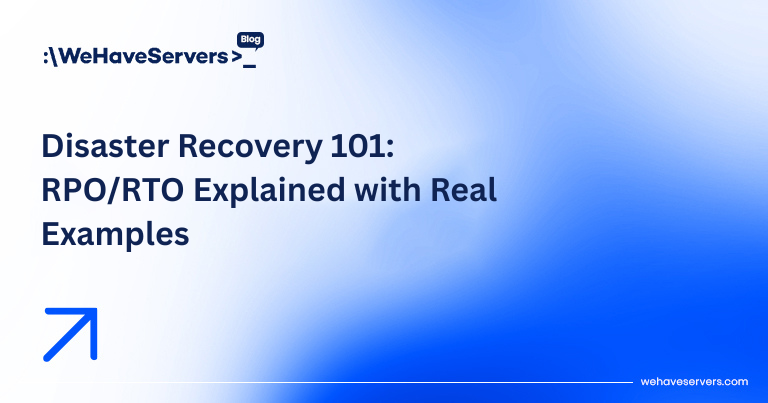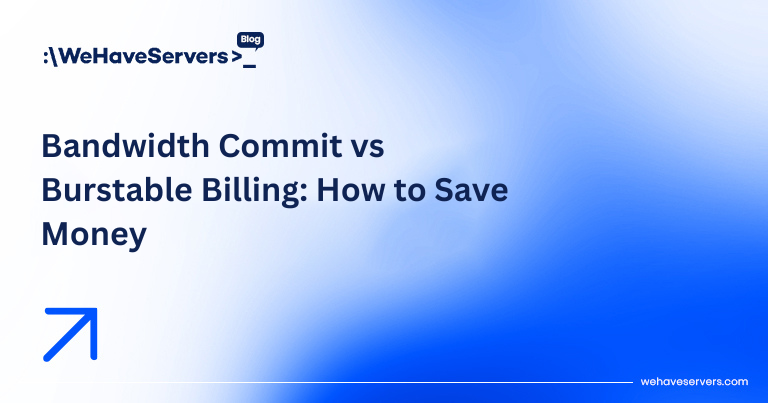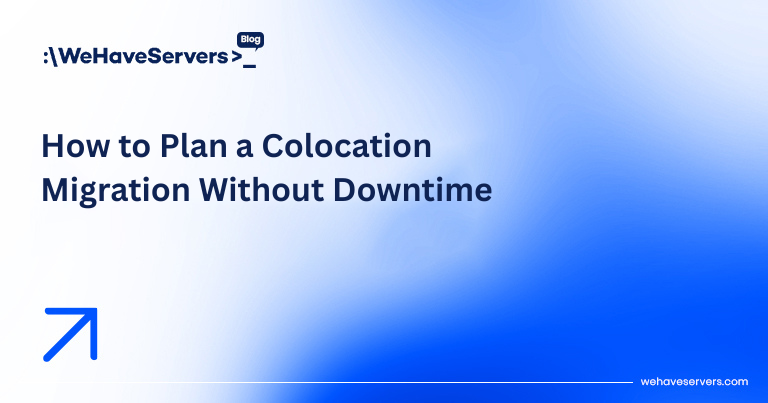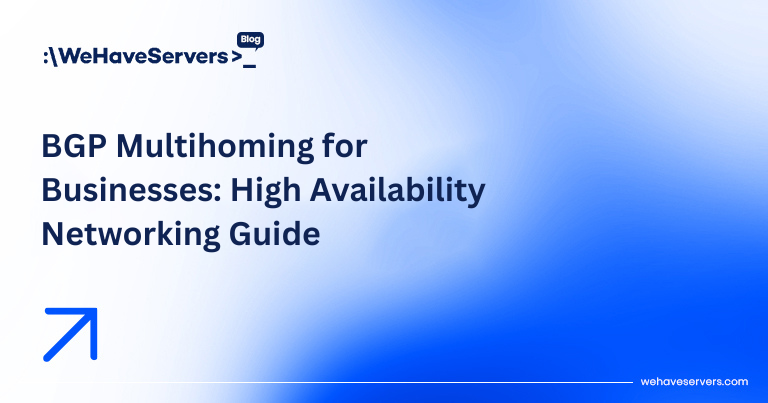
Disaster Recovery 101: RPO/RTO Explained with Real Examples
Disaster Recovery 101: RPO/RTO Explained with Real Examples
In today’s digital economy, downtime is not just inconvenient — it’s financially and reputationally devastating. Data center outages, ransomware, network failures, and even human error can all bring business-critical systems offline. That’s where Disaster Recovery (DR) comes in. A good DR plan ensures that when disaster strikes, your systems and data can be restored quickly and effectively.
At the core of any DR strategy are two metrics: Recovery Point Objective (RPO) and Recovery Time Objective (RTO). Understanding these is essential for sysadmins, IT managers, and business leaders who need to balance cost, risk, and resilience.
🔹 What Is RPO?
Recovery Point Objective defines how much data you can afford to lose during an incident. It is measured in units of time.
Example: If your RPO is 1 hour, you must take backups at least once per hour. In the event of failure, you may lose up to 59 minutes of data — but not more.
- RPO = 24h: Daily backups. Cheap, but potential 1-day data loss.
- RPO = 1h: Hourly backups. Balanced for small SaaS.
- RPO = 0: Continuous data replication. Enterprise-grade, costly.
🔹 What Is RTO?
Recovery Time Objective defines how quickly you must restore service after a disaster. It is measured in hours, minutes, or seconds.
Example: If your RTO is 15 minutes, your infrastructure must be designed to restore systems within that time — through automation, standby servers, or clustering.
- RTO = 24h: Manual restore from tape. Low cost, long downtime.
- RTO = 1h: Automated VM restore with snapshots.
- RTO = 15m: Active-passive failover cluster.
- RTO = Seconds: Active-active multi-datacenter HA.
🔹 Why RPO and RTO Matter
RPO and RTO are business-driven metrics. They must be aligned with:
- Application criticality: Financial APIs need RPO near zero. Internal wiki may tolerate 24h.
- Regulatory requirements: Healthcare and finance often mandate strict RPO/RTO by law.
- Budget: Lower RPO/RTO = higher infrastructure and operations cost.
🔹 Mapping DR Tiers
| Tier | RPO | RTO | Example Use Case |
|---|---|---|---|
| Tier 0 | No DR | None | Non-critical dev/test systems |
| Tier 1 | 24h | 24–48h | Archive systems, non-critical apps |
| Tier 2 | 12h | 8–24h | Internal IT services, file servers |
| Tier 3 | 1h | 1–4h | Small SaaS apps, e-commerce |
| Tier 4 | 15m | 15–60m | Banking portals, trading platforms |
| Tier 5 | Seconds | Seconds | Global payment gateways, telecom |
🔹 Real-World Case Studies
Case 1: E-commerce with Daily Backups
- RPO: 24h. RTO: 12h.
- Database corruption → lost 12h of orders.
- Downtime lasted 6h. Cost: ~$100k in sales + reputation hit.
Case 2: SaaS with Hourly Replication
- RPO: 1h. RTO: 30m.
- VM host failure → failover to secondary site.
- Downtime 20m, 25 min of data lost. Customers unaffected.
Case 3: Fintech with Active-Active HA
- RPO: 0. RTO: seconds.
- Cross-region PostgreSQL replication with Patroni.
- Seamless failover between Frankfurt and Bucharest.
- No data loss, no downtime, but cost 5x higher.
🔹 Building a DR Plan
1. Risk Assessment
- Identify threats: hardware failure, ransomware, natural disasters, human error.
- Map applications to criticality tiers.
2. Define RPO & RTO Per Application
- Customer DB → RPO 15m, RTO 30m.
- Internal wiki → RPO 24h, RTO 48h.
3. Choose Technologies
- Backups: Borg, Restic, Veeam, PBS.
- Replication: MySQL/MariaDB semi-sync, PostgreSQL streaming, Ceph, ZFS send/recv.
- Clustering: Proxmox HA, VMware vSphere HA, Kubernetes multi-zone.
4. Automation & Orchestration
- Ansible playbooks for DR runbooks.
- Terraform for spinning infra in DR site.
- Kubernetes Operators for stateful apps.
5. Testing & Drills
- Quarterly failover tests.
- Documented recovery steps validated by engineers.
- Automated verification of recovery time.
🔹 Sample Configurations
ZFS Replication (Near-Zero RPO)
zfs snapshot pool/db@$(date +%F-%H%M)
zfs send -i pool/db@last pool/db@current | ssh backupserver zfs recv pool/dbPostgreSQL Streaming Replication
primary_conninfo = 'host=standby user=replica password=secret'
standby_mode = onAnsible DR Playbook (VM Recovery)
- hosts: dr-site
tasks:
- name: Restore VM from PBS
shell: proxmox-backup-client restore vm/100 /vmfs/vm-100🔹 Common Mistakes in DR Planning
- Confusing RPO with RTO.
- Setting unrealistic goals (RPO=0, RTO=5m without budget).
- Relying only on snapshots (not true DR).
- Never testing the plan — discovering issues during a real outage.
✅ Conclusion
Disaster Recovery is not just about backups — it’s about aligning RPO and RTO with business needs and building technical solutions to meet those goals. The right DR plan balances cost and resilience, ensuring critical applications recover quickly while minimizing data loss.
At WeHaveServers.com, we design infrastructure with built-in DR capabilities, from snapshot-based restores to cross-datacenter replication, helping businesses in Romania and across the EU achieve the uptime and compliance they need.
❓ FAQ
Is RPO or RTO more important?
Depends on workload. Databases often prioritize RPO (no data loss). Web apps may prioritize RTO (fast recovery).
What’s a good RPO for e-commerce?
Typically 15m–1h. Daily backups are insufficient — too much order data at risk.
How often should I test DR?
At least quarterly. Enterprise compliance often requires proof of drills.
Can I get RPO=0 with a VPS?
Not realistically. RPO=0 usually requires replication across dedicated clusters or cloud-native HA setups.
Is multi-cloud necessary for DR?
Not always, but geo-redundancy (at least 2 datacenters) is recommended for critical apps.



